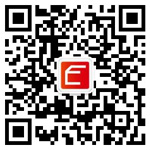

Antigen Information
- ATF2
- FOS
- JUN
- MAP3K7
- SMAD1
- SMAD2
- SMAD4
- SMAD5
Assay Format
- PKC Signaling
- TGF-beta Signaling
- Human
- Cell Culture Supernatants
- Cell Lysates
- Plasma
- Serum
- Tissue Lysates
- Sandwich-based
- Semi-Quantitative
Product Specifications
Product Features
- Easy to use
- No specialized equipment needed
- Compatible with nearly any liquid sample
- Proven technology (many publications)
- Highly sensitive (pg/ml)
- Sandwich ELISA specificity
- Higher density than ELISA, Western blot or bead-based multiplex
Target Names
| Scroll over each target protein for more information | ||||
|---|---|---|---|---|
c-Jun (P-Ser73)
| SMAD1 (P-Ser463/465)
| SMAD5 (P-Ser463/465)
| SMAD4 (P-Thr277)
| ATF2 (P-Thr69/71)
|
C-Fos (P-Thr232)
| SMAD2 (P-Ser245/250/255)
| TAK1 (P-Ser412)
| ||
Application Notes
- Human TGF beta Phosphorylation Array C1 Membranes
- Blocking Buffer
- Detection Antibody Cocktail
- 500X HRP-Anti-Rabbit IgG Concentrate
- 20X Wash Buffer I Concentrate
- 20X Wash Buffer II Concentrate
- 2X Cell Lysis Buffer Concentrate
- Detection Buffer C
- Detection Buffer D
- 8-Well Incubation Tray w/ Lid
- Protease Inhibitor Cocktail
- 100x Phosphatase Inhibitor Cocktail I
- Phosphatase Inhibitor Cocktail II
- Plastic Sheets
- Array Map Template
- Manual
- Pipettors, pipet tips and other common lab consumables
- Orbital shaker or oscillating rocker
- Tissue Paper, blotting paper or chromatography paper
- Adhesive tape or Saran Wrap
- Distilled or de-ionized water
- A chemiluminescent blot documentation system (such as UVP??s ChemiDoc-It® or EpiChem II Benchtop Darkroom or GE"s ImageQuant™ LAS 4000 or Amersham Imagers 600 and 680), X-ray Film and a suitable film processor, or another chemiluminescent detection system.
- Block membranes
- Incubate with Sample
- Incubate with Detection Antibody Cocktail
- Incubate with HRP-Conjugated anti-IgG
- Incubate with Detection Buffers
- Image with chemiluminescent imaging system
- Perform densitometry and analysis
Typical Data

Storage/Stability
- Poling, Holly M., et al. "Mechanically induced development and maturation of human intestinal organoids in vivo." Nature biomedical engineering 2.6 (2018): 429-442.Species: HumanSample type: Tissue Lysates
No posts found
RayBiotech
美国RayBiotech公司于2001年正式成立,由国际公认的蛋白芯片专家黄若磐教授一手创办,总部设在美国亚特兰大科技园。是世界上第一家专业从事蛋白芯片研发和生产的公司。
RayBiotech是一家领先的生命科学公司,提供蛋白质组学发现工具。RayBiotech拥有近150名员工,其目标是向RayBiotech客户(包括来自41个国家的工业界,学术界和研究机构的科学家)提供全球一流的产品和服务。RayBiotech致力于通过生命科学领域的创新和领导地位来加速客户成功。
产品列表:
没有。 | 品牌 | 货号 | 名称 | 规格 |
1 | 射线生物技术 | ELH-15PGDH-1 | 人15-PGDH / HPGD ELISA | 1套 |
2 | 射线生物技术 | PEL-4EBP1-T36-T-1 | 人/小鼠Phospho-4E-BP1(T36)和总4E-BP1 ELISA | 1套 |
3 | 射线生物技术 | ELH-41BBL-1 | 人4-1BB配体ELISA | 1套 |
4 | 射线生物技术 | ELH-2B4-1 | 人2B4 / CD244 ELISA | 1套 |
5 | 射线生物技术 | ELH-17bHSD1-1 | 定制人类17-beta-HSD1 / HSD17B1 ELISA | 1套 |
6 | 射线生物技术 | ELH-6Ckine-1 | 人6Ckine ELISA | 1套 |
7 | 射线生物技术 | ELH-A1BG-1 | 定制人类A1BG ELISA | 1套 |
8 | 射线生物技术 | QAH-ADI-1-1 | 人体肥胖阵列Q1 | 8个样品套件 |
9 | 射线生物技术 | QAH-ANG-1-1 | 人体血管生成阵列Q1 | 8个样品套件 |
10 | 射线生物技术 | QAH-ANG-2-1 | 人体血管生成阵列Q2 | 8个样品套件 |
11 | 射线生物技术 | 230-00001-10 | 重组人SAA | 10微克 |
12 | 射线生物技术 | 230-00002-50 | 重组人S100B | 50微克 |
13 | 射线生物技术 | 230-00003-白细胞 | 重组人类TIMP-1 | |
14 | 射线生物技术 | 230-00005-白细胞 | 重组人类TGF beta 1 | |
15 | 射线生物技术 | 230-00006-白细胞 | 重组人IL-10 |

















